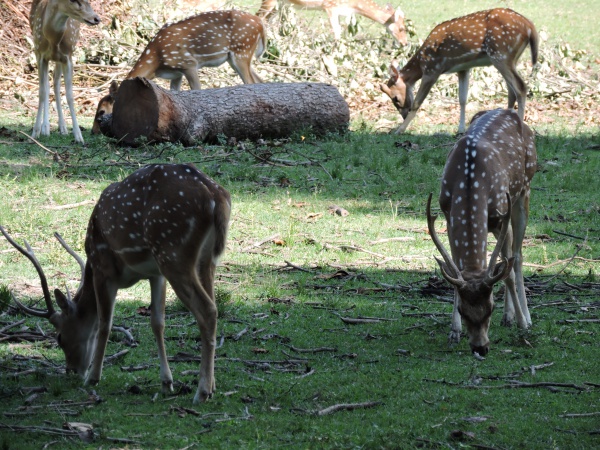Facts About Spotted Deer, Chital, Axis
The chital, also known as the spotted deer or axis deer, is a striking species native to the Indian subcontinent. German naturalist Johann Christian Polycarp Erxleben first described it in 1777. These deer are moderate in size, with males standing about 90 cm tall at the shoulder and females around 70 cm. In terms of weight, males range between 30 and 75 kg, while females are lighter, weighing between 25 and 45 kg. One notable difference between the sexes is that males are larger and possess antlers.
The name "chital" is derived from the Sanskrit word "citrala" which means variegated or spotted. Initially, chital were classified in the subgenus Axis under the genus Cervus, but they were later assigned their own genus. Research has shown that they are related to other deer species such as the barasingha (Rucervus duvaucelii) and the extinct Schomburgk's deer (R. schomburgki).
Chital are active throughout the day, although their foraging patterns vary with the temperature. They move in groups and exhibit strong antipredator behaviors, such as fleeing together and hiding in dense undergrowth. These deer are quite vocal, using bellows, alarm barks, and other calls to communicate. During mating season, males display dominant behaviors and engage in courtship rituals to attract females.
In terms of diet, chital are both grazers and browsers. They feed on grasses, young shoots, herbs, shrubs, and fruits. They thrive in dense forests and open grasslands, particularly in areas with ample forest cover for shade. Chital are found across India, Nepal, Bhutan, Bangladesh, and Sri Lanka. They have also been introduced to countries such as Australia, the United States, and Croatia.
The chital is listed as "Least Concern" by the IUCN due to its extensive range and large populations. However, hunting and competition with domestic livestock have caused declines in some areas. Legal protection and conservation efforts within protected areas have been crucial in maintaining their populations. Additionally, chital have been introduced to various regions worldwide for both hunting and conservation purposes.

 Bhutan
Bhutan